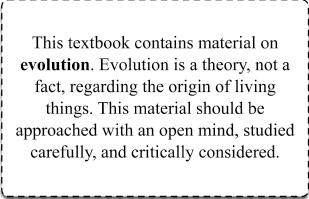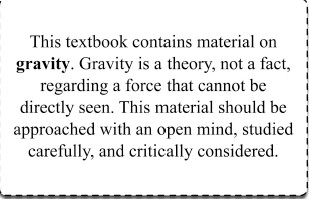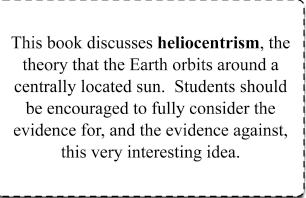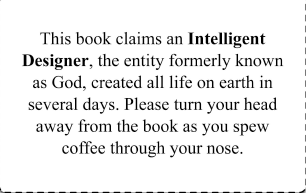ريتشارد دوكنز's Blog, page 507
April 21, 2016
Breast Milk Is A Marvel Of Nature But That Doesn’t Mean Adults Should Drink It To See Off Disease
Photo credit:
Don’t give it to grandad. www.shutterstock.com
A woman’s claim that she extended her father’s life by more than a year by feeding him expressed milk has led many to ask whether human milk can really delay the growth of cancer. The gold standard nutrition for infants, human milk is not, however, a replacement for conventional medicine in the treatment of adult diseases.
Is Lead In Water A Problem Beyond Flint? We Don’t Do The Testing To Find Out
Photo credit:
Water testing isn’t routine. Faucet image via www.shutterstock.com.
Public uproar over lead poisoning in children due to the ongoing water crisis in Flint, Michigan, has dominated the news cycle this winter. The deck was already stacked against kids growing up in Flint. And due to a decision by the city’s emergency manager to start using the Flint River as a municipal water source in April 2014, there has been a dramatic increase in the number of children who will be living with the effects of lead toxicity from tainted water.
Why We Need A “Moon Shot” To Catalogue The Earth’s Biodiversity
Photo credit:
We need other species to survive for the services they provide and the knowledge they can share. Global Environment Facility, CC BY-NC-ND
It’s unlikely that presidential candidates will ever utter the word “biodiversity” while campaigning this year.
Yet among emerging environmental challenges, none has fewer facts or more enduring threats than the large-scale loss of biodiversity. That’s why we need a visionary investment in fundamental exploration to create knowledge and options.
Well Said! Carl Zimmer on Theories
The New York Times published eight essays as part of its “Week of Misconceptions” series in early April. Some of the ideas for the essays came from posts on the Times’s science Facebook page, but others were inspired by “areas of confusion that reporters on The New York Times’ science desk encounter again and again.” Topics ranged from pop-culture astronomy (“In an asteroid belt, spaceships have to dodge a fusillade of oncoming rocks”) to fairly mundane (“Baby teeth don’t matter”). I was pleased to see that two of the topics were squarely in NCSE’s wheelhouse: “Climate change is not real because there is snow in my yard,” and “It’s just a theory.”
Courtesy of Colin Purrington
Minda Berbeco and I have both covered the climate change misconception (here and here), but I’ve only briefly talked about the notorious “it’s just a theory” foolishness in my “Hypotheses, Theories, and Laws, Oh My!” post way back in August 2014. This truly is one of the most pernicious and annoying science misconceptions out there, applied to all aspects of science but—of course—mostly and especially to evolution. Browsing through the hundreds of comments on the Times’s science page, I found that it came up again and again—lots of people are frustrated by this one, and I’m excited that the wonderful Carl Zimmer has given me an excuse to talk more about it.
In his discussion of the misconception, Zimmer calls theories “the crown jewels of science,” and the analogy is apt. As anyone in science knows, theories are anything but what’s suggested by the common meaning of “theory”: a hunch or a guess. Ken Miller, quoted in Zimmer’s piece, says, “In science, the word theory isn’t applied lightly … A theory is a system of explanations that ties together a whole bunch of facts. It not only explains those facts, but predicts what you ought to find from other observations and experiments.”
In 2004, Miller spent more than two hours testifying about the meaning of “theory” in Cobb County, Georgia, in a case brought by parents against the school board that had, in 2002, placed warning stickers on all biology books. The plaintiffs won the case and the stickers are no longer spouting their silliness. (Although they won the case, the  Original wording of Cobb County disclaimer. (Courtesy of Colin Purrington)
Original wording of Cobb County disclaimer. (Courtesy of Colin Purrington)
decision was vacated on appeal and remanded back to the trial court, where the case was settled without a new trial. Still, no more silliness-spouting stickers in Cobb County.) What did the stickers say? This: “This textbook contains material on evolution. Evolution is a theory, not a fact, regarding the origin of living things. This material should be approached with an open mind, studied carefully, and critically considered.”
Notice that these stickers don’t target all theories, just evolution. I was working for Pearson on Miller’s high school textbook, in fact, when all of this was happening. I followed the case closely, and compiled a slew of parody cartoons. Particularly  Courtesy of Colin Purrington.
Courtesy of Colin Purrington.
memorable was a page of disclaimer stickers about other theories. “Gravity is a theory, not a fact,” for example. These delightful stickers were designed by Colin Purrington, (formerly a biology professor at Swarthmore College, now a blogger and photographer), who has granted permission to show them here. Aren’t they great? I love them because their complete ridiculousness points out the obvious: nobody feels the need to highlight any theory in science besides evolution as a “theory.” We use up oxygen by saying “the theory of evolution” over and over but rarely bother with “the theory that germs cause illness” or “the theory that the sun is at the center of the solar system.” And this all the bologna about “it’s just a theory” is always in association with evolution. No one ever decries the legitimacy of the periodic table or the structure of the atom. This blatant selectiveness drives me crazy. If you’re going to be wrong about something, at least have the decency to be wrong consistently.
But it would be better not to be wrong in the first place. A better way to think about theories than as guesses or hunches is as maps. That’s the suggestion offered in Zimmer’s essay by the philosopher of science Peter Godfrey-Smith: “To say something is a map is not to say it’s a hunch…It’s an attempt to represent some territory.” Expanding on the suggestion, Zimmer writes, theories are a map: facts are its rivers, hills, and towns. To see how good a map is, we use it to navigate. To test the quality of a theory, we use it to make predictions and test ideas. If you get lost easily following a map, you revise it or dump it (and get a new one). If a theory fails to accommodate new evidence, you modify or abandon the theory (and get a new one).
Through this process of constant testing, modifying, tweaking, testing again, and so  Courtesy of Colin Purrington.
Courtesy of Colin Purrington.
on, we have come to develop some truly foundational theories in science. That is what everyone needs to know. That is what our students must come to understand. I’d love it if teachers included a question on their exams along the lines of: “Explain why this sentence makes no sense: ‘X is just a theory’” (for whatever theory X the exam covers). It would help them to get their students to understand that there are a lot of theories out there and that “theory” in science is not a pejorative term.
And when it comes to evolution, by all means talk about it as a theory—but make sure to emphasize what that means. Also, be sure to clarify that evolution is also a fact. As Stephen Jay Gould said: “Evolution is a theory. It is also a fact. And facts and theories are different things, not rungs in a hierarchy of increasing certainty. Facts are the world’s data. Theories are structures of ideas that explain and interpret facts.”
 Courtesy of Colin Purrington.
Courtesy of Colin Purrington.
Well saids all around—to Zimmer, Miller, and—of course—Gould. It’s all so obvious, isn’t it? That’s part of what makes this particular misconception so frustrating. But as tempting as it may be to shrug it off when someone says “evolution is just a theory,” it’s imperative that we engage, whether by asking, “what do you mean by ‘just’?” or by directing them to one of Purrington’s stickers.
Are you a teacher and want to tell us about an amazing free resource ? Do you have an idea for a Misconception Monday or other type of post? Have a fossil to share ? See some good or bad examples of science communication lately? Drop me an email or shoot me a tweet @keeps3.
Short Sighted? Here’s How To See Something Clearly, Without Your Glasses
Photo credit:
This is probably only a temporary solution, mind you. Muzicman JY/Shutterstock
As anyone who’s hampered by their less-than-perfect eyesight will know, leaving behind your glasses or forgetting to put on your contact lenses makes for a very inconvenient day. Don’t worry too much though, because the solution to this problem rests in your hands – literally.
How Much Would It Cost To Make Darth Vader’s Suit?
Photo credit:
Stefano Buttafoco/Shutterstock
Darth Vader's suit could cost you an arm and a leg (or should that be two legs?). If you’ve ever wondered how much it would cost to get your supervillain career of the ground, Shade Station have worked out how much it would actually cost to create a Darth Vader suit.
Check Out What Snake Venom Does To Human Blood
Photo credit:
A saw-scaled viper. natalia bulatova/Shutterstock
Snakes cause an estimated 100,000 deaths a year. But the way some snake venom delivers its deathly blow is actually a lot stranger than you may realize.
April 20, 2016
Disrupting the Classroom, or How Self-Styled “Education Reformers” Always Get It Wrong, Part 2
Last time we examined an article by Rebecca Mead about AltSchool, a “disruptive” Silicon Valley educational system founded by a former Google executive, Max Ventilla. Let’s look now at a few of Ventilla’s statements to get a better sense of how AltSchool’s educational “disruption” happens.
Mead’s article quotes Ventilla about the value of foreign language instruction:
If the reason for having your child learn a foreign language is so that they can communicate with someone in a different language twenty years from now--well, the relative value of that is changed, surely, by the fact that everyone is going to be walking around with live-translation apps.
The value of foreign language instruction is not merely to speak with people in another language. The point of learning a foreign language is to understand your own language. Of course it would be unrealistic to expect that a few classes would, decades later, allow one to carry on a conversation—but that’s not why schools almost universally require foreign language classes. Understanding syntax and practicing declensions isn’t about equipping you to order at a restaurant; rather, students learn to think about language with a new perspective, and from that perspective, to understand their own mother tongue.
It’s a bit unsettling that a would-be education reformer gets something so basic as the value of foreign languages so wrong, and would recommend instead the lazy crutch of using an app. Translation apps are limited and convey little of the idioms and nuance involved in communication; a sarcastic “Get out of here!” is very different from an angry “Get out of here!” but a translation app makes no distinction. In the case of “Get out of here!” such a miscommunication might result in fisticuffs. To envision what is lost by relying on a translation app instead of personal knowledge of a foreign language, imagine using a translation app to translate a poem.
Moreover, my colleague Minda Berbeco, was quick to point out that her own young son visits a playground daily with children speaking 3 or 4 different languages. The exposure to other languages at a young age has helped in his language and social development. She shivers at the thought of him pulling out a smartphone to translate “hand me the shovel”. Do we really need a computer to intercede on our most basic daily interactions? Can't we teach children how to connect on multiple levels without the aid of a plug-in device?
Even more disturbing is the assumption that the value of learning languages derives from its practical use. When we apply the standard of practical use, much of science education falls on the chopping block. Of what practical use to students is learning the difference between mitosis and meiosis? Of what practical use is learning that penicillin does not kill viruses? Of what practical use is knowing that force equals mass times acceleration, that the Earth orbits the sun and not the other way around, or that atoms have electron shells? Of what practical use is evolution or climate change for that matter?
Once we start down this slippery, philistine path, where every education subject is judged by its relevance to future employment, then we have descended from education to training. Training is for pets; humans should be educated. You train a dog to do a trick, but teachers educate students to think. Education is so much more than simply learning how to do one narrow task in one specific way; education is about learning why something is true, why something is important.
The philistine approach to education, where all topics must fit some future employment, was skewered by Charles Dickens in Hard Times, as Rebecca Mead notes. When a character in Hard Times declares, “Teach these boys and girls nothing but Facts,” it means that working-class children were fit only as cogs in a factory assembly line. They were meant to obey, not to innovate. They would punch a timecard, but not own a business. Education that focuses on employment rather than knowledge cripples the minds of students and will, at best, prepare them for narrow jobs that will probably no longer exist when they are of working age.
Mead quotes Ventilla:
‘A three-year-old today isn’t that different,’ he told me. But, largely because of technology, ‘a thirteen-year-old is really different.’
This observation has a lot of problems. Because so much of human behavior and learning is hard-wired in the brain, saying that today’s thirteen-year-olds learn in a different way than their peers several decades ago posits major alterations to brain structure and genetics. Moreover, these changes are proposed to arise largely from using gadgets. That’s a leap that seems, to me, unjustified by the evidence. Let’s see proof of new, unique genes related to technology use and brain development; let’s see fMRIs demonstrate how thirteen-year-old brains today are structurally different from thirteen-year-old brains in years past. Absent such evidence, radically altering how we do education seems unjustified, especially when we can draw upon a deep experience and historical precedent in how people learn.
Mead reports:
Ventilla also wanted students to focus on developing skills that would be useful in the workplace of the future, rather than forcing them to acquire knowledge deemed important by historical precedent.
First, historical precedents exist because they work, and the value of knowledge handed down over generations cannot be underestimated. It may be an impulse of tech leaders, like revolutionary Jacobins, to sweep away the old, launching a new calendar with Year One, but this has rarely turned out well in history or in education. Without guidance from the knowledge of the past—that maligned “historical precedent”— youth look to each other for what to do, a descent into the blind leading the blind.
Second, it is exceptionally naive to assume that education has not changed or been updated over time. Teachers are keenly aware of their students’ needs, using time-tested approaches and new techniques to connect with their students. The notion of education as trapped in the past is dismissive of educators and the hard work they do.
Teachers are natural innovators, constantly wanting to bring new concepts, methods of teaching, and the latest and greatest science into their classrooms, guided by their front-line teaching experience. We expect workers in other professions—doctors, lawyers, carpenters—to adapt and improve as they gain experience. But for some reason people who have never spent a day in front of a class feel free to tell teachers how best to do their jobs. (Could this condescending paternalism toward teachers reflect lingering misogyny from a time when so many teachers were women?)
We don’t need to “reform” education. We need to stop the disruption from endless “reforms” and let teachers teach using the methods that in their personal experience have achieved success.
We also need the courage to admit the real causes of educational failures. The problem in education is not teachers, unions, lesson plans, or schedules. The real problem is poverty. We will explore this more in Part 3.
50% Of The Great Barrier Reef Is Now Dead Or Dying, 93% Is Bleached
Photo credit:
A bleached coral sits next to one that has died. Ove Hoegh-Guldberg, Global Change Institute, University of Queensland
The news keeps getting worse for the the world's greatest coral reef system. Fresh on the heels of news that most of the Great Barrier Reef (GBR) has bleached comes the announcement that more than half of the coral in the reef has died this summer. Prospects look grim for most of the rest.
An Enormous Volcanic Eruption Almost Finished Off The Mayan Civilization
Photo credit:
Kukulcan Temple, a Mayan pyramid at Yucatan in Mexico. rui vale sousa/Shutterstock
Volcanic activity generally does one of two things: it gives life, and takes life away. People are more familiar with the latter concept, and there are plenty of volcanic eruptions around the world that have lived up to this reputation.
ريتشارد دوكنز's Blog
- ريتشارد دوكنز's profile
- 106 followers



